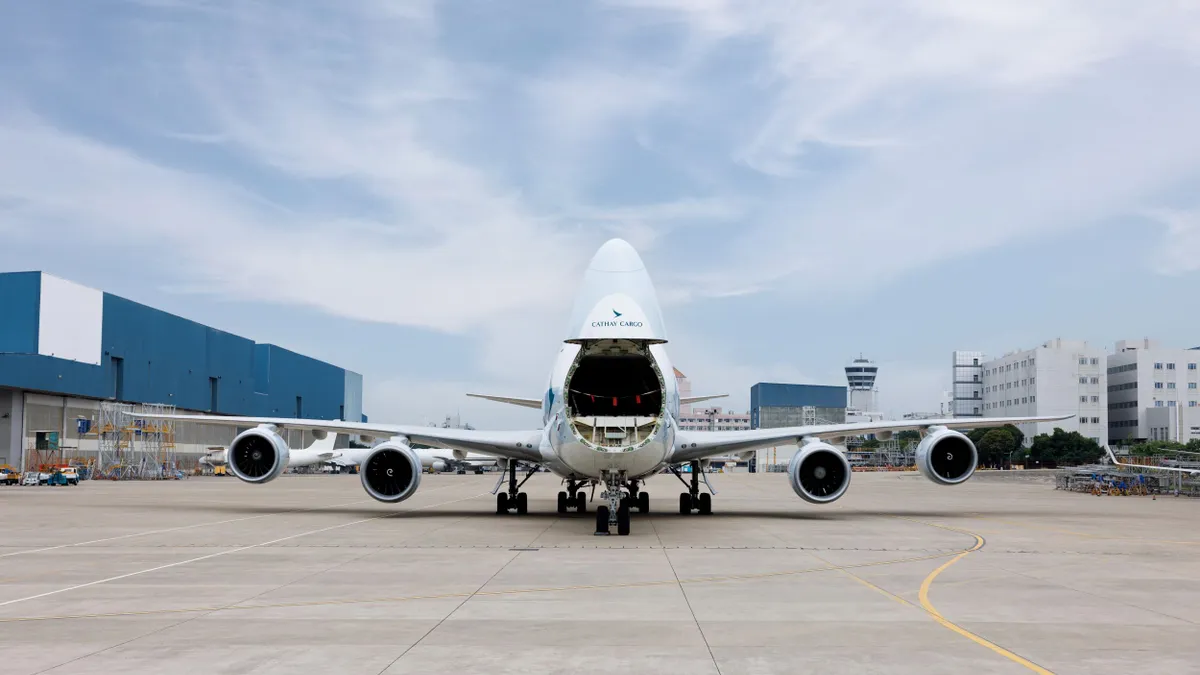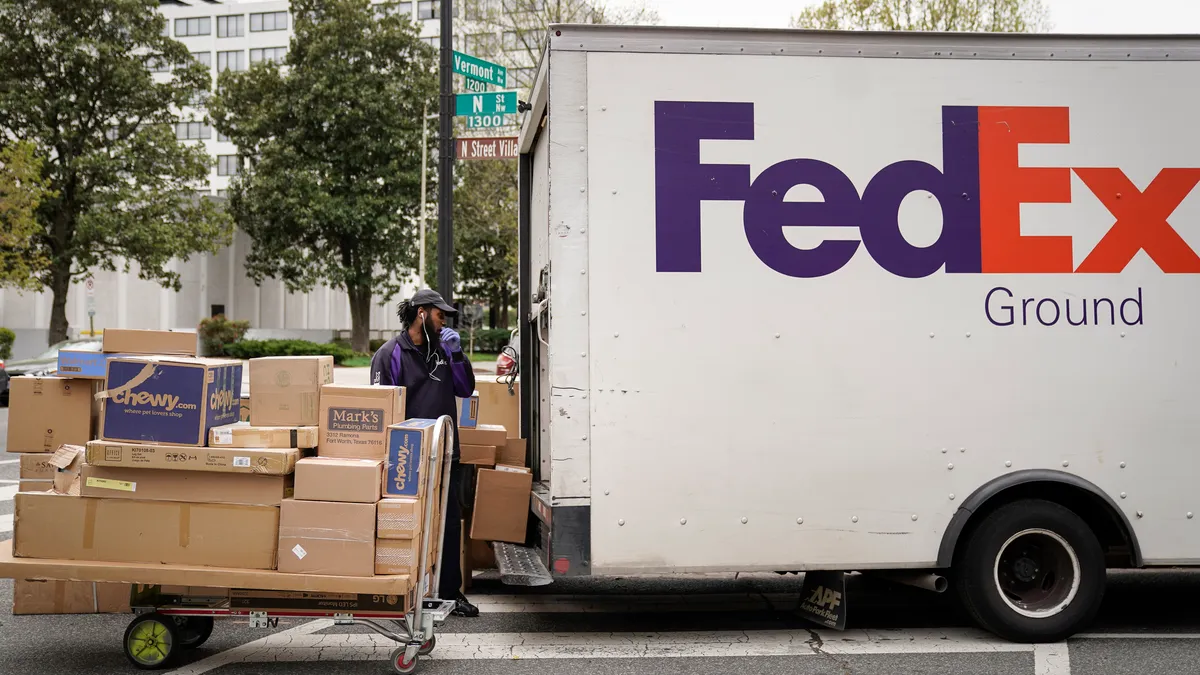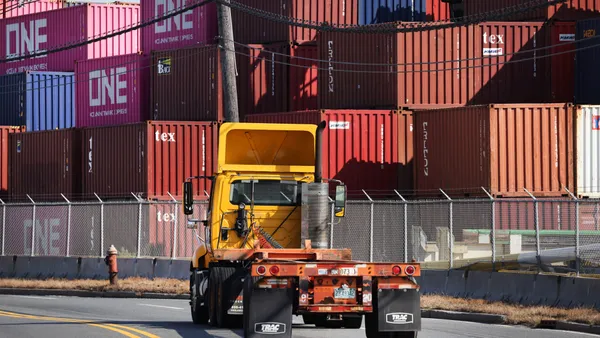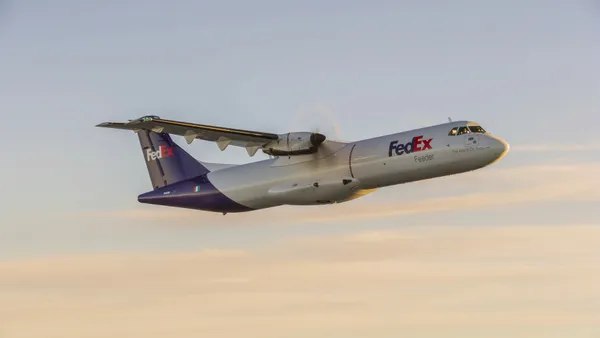Logistics planning is always critical for air cargo shippers, but as Lunar New Year approaches, the stakes are even higher.
Given the holiday spurs production shutdowns in countries across Asia for several weeks, demand forecasting and rate planning is difficult, Matt Castle, VP of global forwarding at C.H. Robinson, told Supply Chain Dive. Plus, the impact of the holiday on freight activity varies from year to year.
This year’s celebration, for instance, is earlier than usual (roughly Jan. 29 to Feb. 4), although dates differ from country to country. In 2024, the holiday ran from Feb. 10 to Feb. 17, Joe Kronenberger, SVP of air freight product at Geodis, told Supply Chain Dive.
Although the Lunar New Year may last a week, its impact extends further out, Castle said. Manufacturers in China often cease operations up to six days in advance of the holiday, with a return to full-capacity production taking up to 10 days after the holiday week ends.
“The lack of consistency and unreliable forecasting makes it critical for shippers to [assess] urgent and near-term inventory needs and prepare,” Castle said. “This is especially important for industries like automotive and pharmaceuticals with just-in-time inventory models.”
The impact on U.S. air cargo demand
Global volumes are anticipated to be lower this Lunar New Year than usual for general cargo and e-commerce shipments, said Kronenberger. In fact, air cargo spot rates are predicted to drop by as much as 25% compared to last year’s holiday timeframe, he added, citing updates from the Hong Kong International Airport.
Kronenberger attributed this potential dip to a variety of factors. Retailers are still “flushing out inventory” from the U.S. holiday season, he explained. Plus, many importers opted to move inventory ahead of another possible East and Gulf Coast port strike — which has since been avoided — and the threat of higher tariffs under the Trump administration.
U.S. air cargo demand is expected to pick up ahead of Jan. 29, making preparation for the Lunar New Year critical to ensure smooth supply chain operations, Kronenberger said.
However, currently low demand could lead to flight cancelations and exacerbate delays on shipments, he said. Customs may also have reduced personnel levels and limited capacity to handle tasks like cargo inspection.
“Both of these limitations have the potential to result in significant delays, which can be mitigated with enough advanced preparation,” Kronenberger said.
How shippers can prepare
Businesses with Asia-based suppliers should release shipments at least a week prior to the Lunar New Year celebrations to avoid traffic congestion, especially in long-haul trucking, Kronenberger said. He further advised shippers to diversify modes and routes, including considering air cargo and intermodal options.
Since returning production to full capacity after the holiday will vary by company, shippers also should directly check and maintain communications with suppliers and logistics partners.
“Map out contingencies and ensure everyone is on the same page regarding order fulfillment costs and timelines. In the event of delays, transparency and adaptability are key,” Kronenberger said.
Understanding which freight should be transported by air is also important, according to Castle.
“Accurately assessing the urgency of shipments, calculating the cost of failure, and then choosing the appropriate transportation method is crucial to both maintaining inventory and controlling costs,” he said.
Besides planning, advanced booking and alternative logistics solutions, shippers should also “define importance levels for each purchase order or shipment and consider prioritising or upgrading essential shipments,” per a Jan. 8 notice from forwarder Scan Global Logistics.
This year has already featured elevated spot rates and demand from Asia to the U.S., which is expected to continue through the end of the month, Castle noted, potentially with new tariffs as a primary driver.
“Air freight has traditionally been a reliable option for businesses willing to pay higher rates to avoid disruptions, and the ongoing disruptions in ocean shipping have further increased the reliance on air transport,” said Castle.
Editor's note: This story was first published in our Logistics Weekly newsletter. Sign up here.













